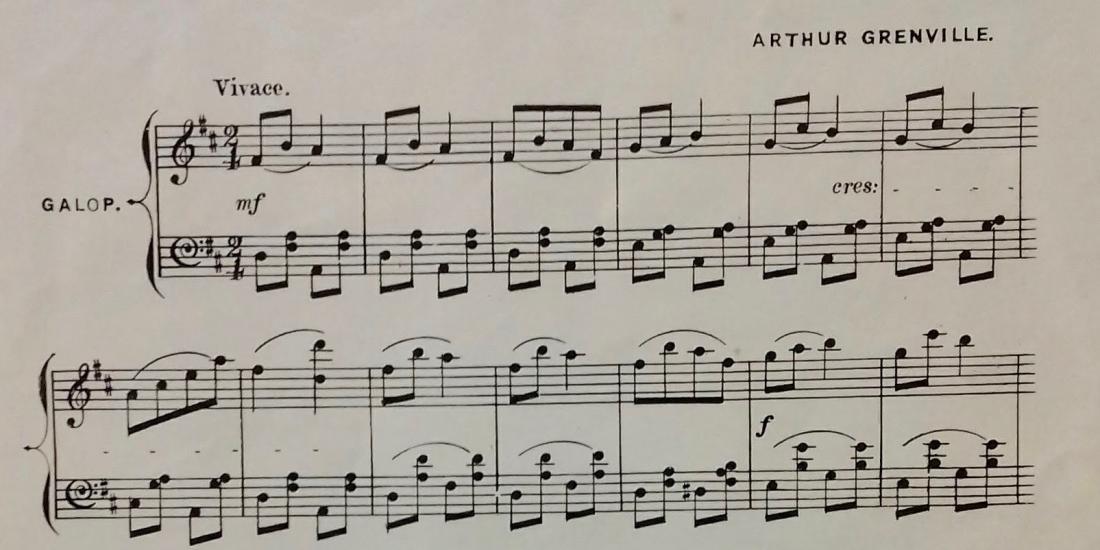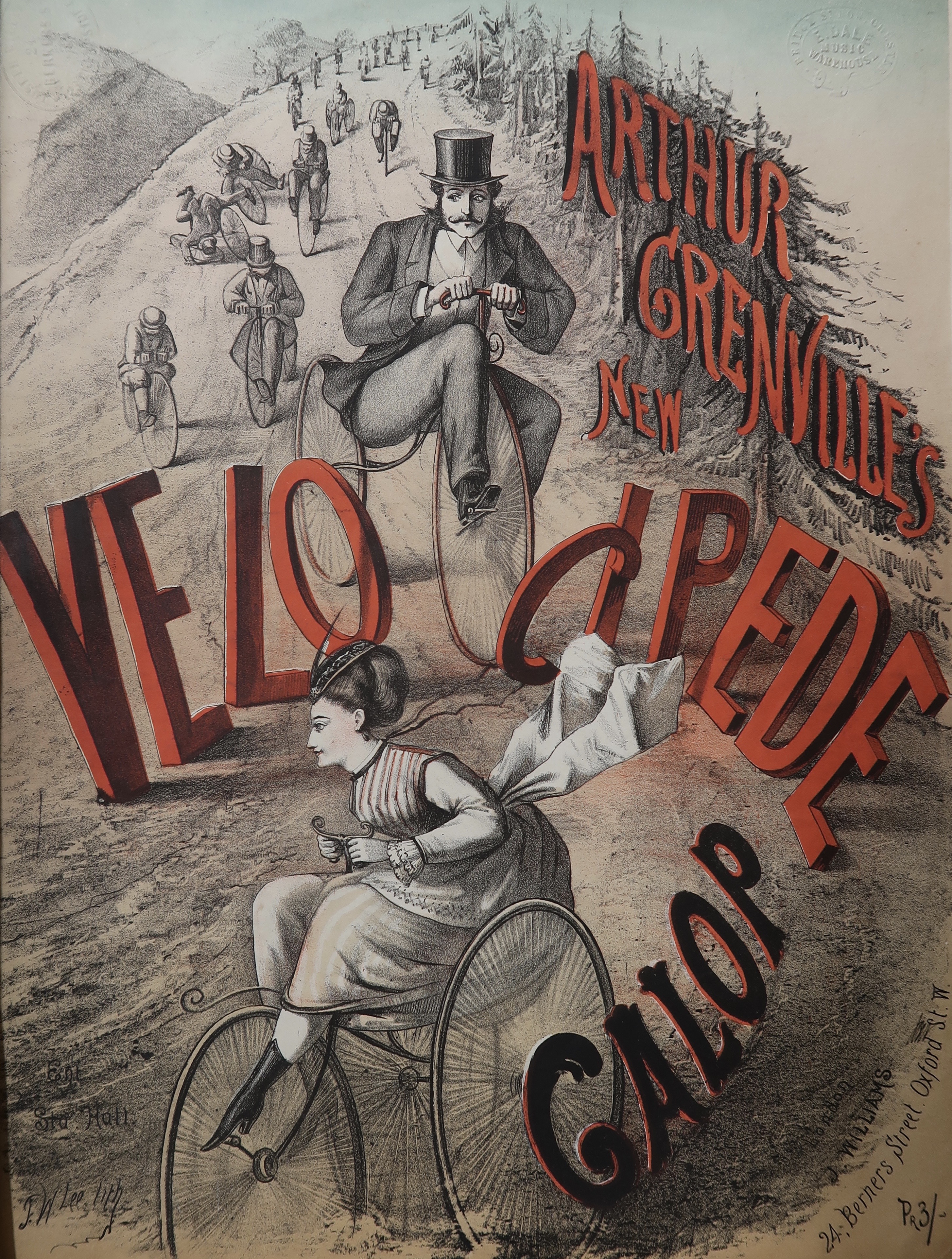
A. Grenville: The New Velocipede Galop (1869)
Arthur Grenville’s New Velocipede Galop (London: J. Williams, [1869])
Erddig J.5.03 (19), NT 3225874.21
To download mp3 files either click on the three dots or right-click on the player and choose the save/download option.
Recording Details:
Dominika Maszczynska - Collard & Collard grand piano, c.1876
Recorded in the Drawing Room, Erddig, 28 January 2020
SCORE: Erddig J-5-3(19) Grenville - New Velocipede Galop
The velocipede was an early incarnation of the bicycle which, after gaining popularity in France, briefly became fashionable in England (under the nicknames hobby horse or dandy horse) around 1818-1819. The velocipede experienced another renaissance in Paris in the late 1860s, which turned into a genuine craze in 1868-1869: velocipedes (or boneshakers) were popular across Europe and North America, which saw the development of riding schools and clubs (Butler 2019; Smithsonian Institution n.d.). This increased interest in the bicycle brought about links with equestrian riding and dance in choreographed entertainment. European advertisements and instruction manuals pointed towards the performance of equestrian tricks on the bicycle and the delineation of floor patterns traced by the wheels that resembled the outlines created by dancers’ feet. Stage performances included ballet dancers executing manoeuvres on velocipedes and there were even velocipede balls (Hoffman-Cabenda and Zöllner 2020).
This explosion of fervour attracted both denigrators and enthusiasts in the musical arena. In 1822 an article in the Quarterly Musical Magazine and Review decried the trend towards increasingly virtuosic execution, declaring the piano had been turned “into a velocipede, and reckons her success by the number of miles which she can traverse in an hour, not regarding the awkwardness or ungracefulness of her method of travelling”. The author was not a fan of the velocipede either, referring to it as a “ludicrous machine” (Minimus 1822). Despite this earlier aversion, the velocipede also inspired the production of music, most notably the velocipede galop which, as a dance form, suitably captured the essence of speed and connection with horseback riding, but it also spread out to encompass other dances, leading to velocipede waltzes, polkas and quadrilles. This brightly illustrated galop, which shows madly racing cyclists led by a woman velocipedist on the cover, was published in the same year as the height of the velocipede craze, and therefore reacts to the new fashion for cycle riding.
Further Reading:
Butler, Nic. 2019. “The Velocipede Invasion of 1869.” Charleston County Public Library, July 19, 2019. https://www.ccpl.org/charleston-time-machine/velocipede-invasion-1869
Hoffmann-Cabenda, Birte, and Eva Zöllner. 2020. “The Velocipede Conquers the Ballroom: Knoll, the Corps de Ballet and the Velocipede Craze of 1869.” Historical Dance Society Lockdown Lectures, 27 May 2020. https://www.youtube.com/watch?v=i1-ASZPREM4
Minimus (pseud.). 1822. “On Church Music.” The Quarterly Musical Magazine and Review 4, no. 14 (April): 172-188.
Smithsonian Institution. n.d. “The Development of the Velocipede.” Accessed June 25, 2021. https://www.si.edu/spotlight/si-bikes/si-bikes-velocipede

Title page for The New Velocipede Galop by Arthur Grenville, Erddig J-5-3 (19).
